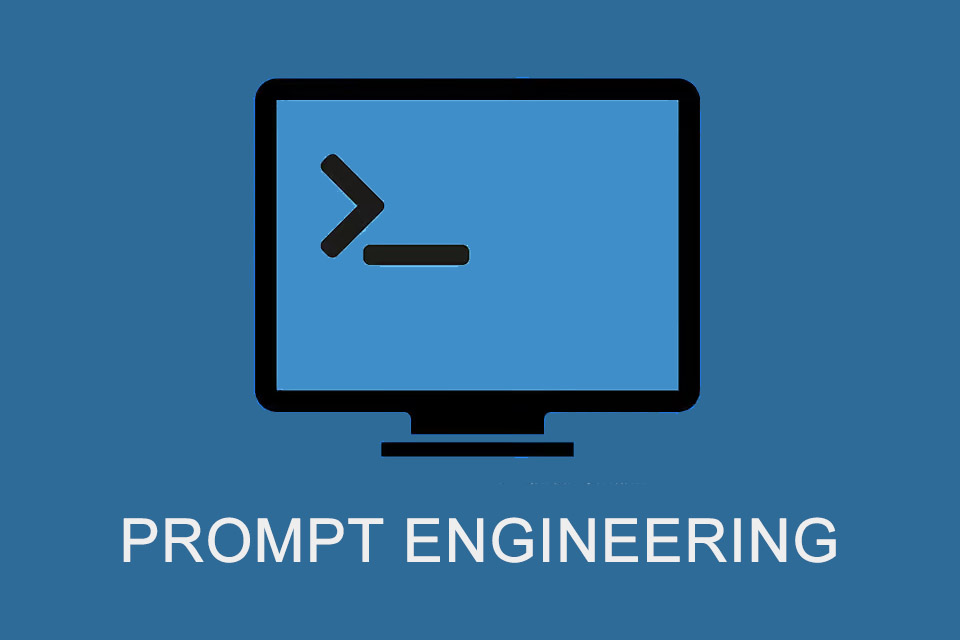What is Prompt Engineering?
Smartpedia: Prompt engineering is the systematic approach to realising dialogue-oriented interfaces such as chatbots or virtual assistants.
Prompt engineering – enabling interaction between user and system using natural language
The development of computer systems that can perform tasks that normally require human intelligence is becoming increasingly popular. Prompt engineering is a term used to describe the process of developing and implementing conversational interfaces such as chatbots, virtual assistants and other AI-powered speech-based systems.
The term originates from the concept of “prompts” used in computer systems to initiate a user’s interaction with the system. The field of prompt engineering has grown rapidly in recent years with the advancement of natural language processing (NLP) and machine learning (ML) technologies.
According to experts, the future of prompt engineering looks promising as the demand for chatbots & co. continues to grow across all industries. As technology continues to improve, it is expected that many advanced dialogue systems will be available in the future, capable of handling more complex tasks and interactions with users. In addition, there is likely to be a growing need for professionals trained in prompt engineering to design and develop these systems, so this could be a promising career path for years to come.
The interplay of artificial intelligence and prompt engineering
A term that is becoming increasingly important is Artificial Intelligence (AI). AI refers to the development of computer systems that can perform tasks that normally require human intelligence, such as visual perception, speech recognition, decision-making and language translation. AI can be divided into several subfields, such as
- Machine Learning,
- Deep Learning and
- Computer Vision,
and is used in various industries, such as healthcare, finance, transportation and entertainment. The goal of AI is to develop systems that can learn from data, make predictions and perform tasks normally done by humans, but with greater accuracy, efficiency and speed.
AI and prompt engineering are closely related in that prompt engineering relies heavily on AI technologies, particularly natural language processing (NLP) and machine learning (ML), to develop conversational interfaces such as chatbots and virtual assistants.
In prompt engineering, NLP is used to process and understand natural language input from users, while ML algorithms are used to train chatbots and virtual assistants to respond meaningfully to that input. AI is also used to continuously improve the performance of these conversational interfaces over time by learning from user interactions and adjusting the underlying models accordingly. In short, prompt engineering is a practical application of AI.
Key steps in prompt engineering
A typical prompt engineering process for developing a communication interface could look simplified as follows:
- Data collection: the first step is to collect data to train the system. This data can come from various sources such as customer dialogues, chat transcripts or other similar sources.
- Data preparation: The collected data needs to be prepared and cleaned to remove invalid or unusable data and train the system efficiently.
- Model selection: Next, one chooses an appropriate ML model to train the system. Here one can choose between different models such as regression models, neural networks or decision tree models.
- Model training: The selected model is trained with the prepared data to match it to the task to which it is to be applied.
- Deployment: Once the model is trained, it can be deployed to be used in a productive environment.
- Monitoring and optimisation: Finally, the system is monitored and continuously optimised to ensure that it meets current requirements and provides a good user experience.
With this process, one can create an interface based on NLP and ML that is able to interact with users via natural language and understand and fulfil their executions.
Terms in the context of prompt engineering
In addition to the terms already named, there are at least four expressions that come up relatively frequently in conversations about prompt engineering:
- Prompt Injection: prompt injection is the addition of new prompts or responses to the conversational repertoire of a chatbot or virtual assistant. This can be done to improve the overall performance of the chatbot or to introduce new features.
- Prompt Takeover: Prompt takeover refers to the scenario where a chatbot or virtual assistant takes over the conversation and processes a request without human intervention. This can be used to improve efficiency, reduce waiting times and create a seamless user experience.
- Prompt Leak: A prompt leak is a situation where a chatbot or virtual assistant reveals information that it should not have access to or share with the user. This can happen due to a flaw in the design or implementation of the system and can compromise the security and privacy of user data.
- Reverse Prompt Engineering: The term used to describe a process of analysing existing systems to identify and subsequently optimise the underlying design patterns, algorithms and decision-making processes.
In summary, Prompt Injection, Prompt Takeover and Reverse Prompt Engineering are techniques used to improve the performance and functionality of dialogue systems, while Prompt Leak is a potential security issue that should be avoided.
Advantages of prompt engineering
There are already many companies that have successfully integrated prompt engineering into their operations and are reaping the benefits, such as increased efficiency, improved customer experience and cost savings. Some examples are:
Customer care: Companies such as Bank of America and Zendesk use chatbots to handle customer queries to reduce waiting times and provide immediate support.
E-commerce: Online retailers such as H&M and Sephora use chatbots to help customers search for products, make recommendations and process orders.
Healthcare: Healthcare organisations such as Kaiser Permanente and the Mayo Clinic use chatbots to help patients access health information, make appointments and answer questions.
Finance: Financial institutions like Capital One and American Express use chatbots to process account enquiries, provide account updates and assist with financial transactions.
These are just a few examples of how companies are using prompt engineering to improve their operations and create a better customer experience. As technology continues to advance, it is expected that more and more businesses will adopt this technology and reap the associated benefits.
Impulse to discuss
How can prompt engineering improve the user experience in dialogue-oriented systems and which processes are probably best suited to implement it safely and effectively?
Notes:
If you like the article or would like to discuss it, please feel free to share it in your network. And if you have any comments, please do not hesitate to send us a message.
Prompting and prompt engineering are used synonymously in numerous internet articles. However, these are two different things that are carried out by different groups of people. A user prompts, for example, by interacting with the frontend of a chatbot. In order to receive the most useful answers possible, he will try to improve his prompt step by step – for example, by asking for further details or providing contextual information. He optimises his prompt. Prompt engineering takes place in the backend of a system and is carried out by an “engineer” – e.g. a software developer. He tries to provide the user with “better” answers to his prompts.
Here you can find an interesting Video: What is Prompt Engineering?
Here you can find a directory with AI tools worldwide.
And here you will find additional information from our Smartpedia section:



